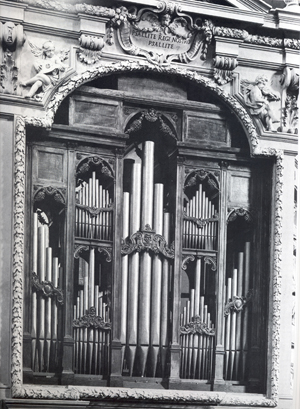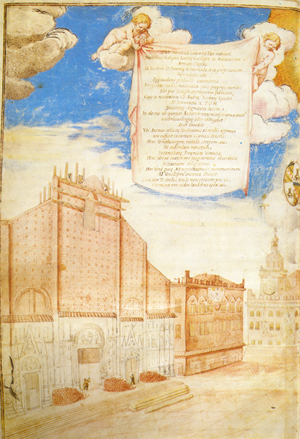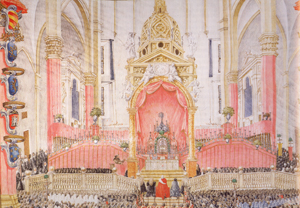Voyage into
the Historical Music Institutions of Bologna
by Maria Chiara Mazzi
San Petronio, the music chapel.
In this issue, we are
initiating a journey into the historical music institutions of Bologna, those
that have been in existence for a few centuries and that are still active
 today and constitute a point of reference in the music life
of the city.
today and constitute a point of reference in the music life
of the city.
We have chosen to plan our itinerary in chronological order and
to begin, therefore, from the oldest institution up to the more recent ones.
According to this principle, inevitably, the first institution we must talk
about is the Chapel of San Petronio.
Between the fifthteen and the sixteenth
centuries many chapels, music areas adapted to the liturgical service, were
established in the main churches of Bologna. Certainly, however, the most
important chapel was that of San Petronio, officially established on October 4,
1436 by Pope Eugene IV, and immediately becoming a point of reference for music
culture not only in the city, but in all Italy, Bologna being the second city of
the Papal State.
Thanks to the presence of a strong group of singers and
instrumentalists and that of two wonderful opposite organs (on the left the one
of Baldassarre Malamini dating back to 1596 and to the right the oldest large
organ in the world still functioning today, built in 1471 by Lorenzo da Prato,
both recently restored and normally used), the music produced in the Basilica
was immediately distinguished because of the double choir structure where
singers positioned themselves on the balcony in two separate and opposite
areas.
In the late seventeenth century, great masters active in San Petronio
(like Colonna, Torelli, Perti and Carretti among others) elaborated the form of
soloist concerts.
Compositions prepared in San Petronio were also
characterized by the steady use of the trombone, an instrument used by the same
virtuosos of the Concerto Palatino. Mozart, who followed the functions for the
celebrations of Saint Patrono during his stay in Bologna at the beginning of the
70s in the eighteenth century, gave a precise account on the use of these
instruments and the magnificence of the ceremonies.
Following a crisis at the
end of the eighteenth century, when financial scarcity brought on the
dissolution of the two vocal and instrumental groups, the chapel came back to
its full institutional function in the second half of the nineteenth century
under the guidance of important Italian musicologists and musicians like
Gaspari, Mancinelli and Martucci who aggregated around thirty musicians paid
for a whole year and whose duty was to accompany the music apparatus during
about forty liturgical celebrations. After ups and downs, the Chapel was
declared archiepiscopal in 1996 (following a restoration in 1984), it is today
busy on many occasions and circumstances, namely the celebrations of October 4.
It is also used for important music recordings and concerts which present the
works of unknown masters of the past. Considered a very important music archive
full of masterpieces that largely still need to be rediscovered and executed
again, this institution still holds in its future "an important
past".